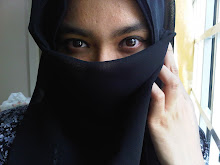The normal s-curve shape of the back acts as a shock absorber, reducing reduce stress on the vertebrae. Wearing high heels causes lumbar (low-back) spine flattening and a posterior (backward) displacement of the head and thoracic (mid-back) spine. High heel shoes cause you to lean forward and the body's response to that is to decrease the forward curve of your lower back to help keep you in line. Poor alignment may lead to muscle overuse and back pain.
2. your KNEES
Knee osteoarthritis is twice as common in women. Some of that blame may be due to high heels. The knee stays flexed (bent) and the tibia (shin bone) turns inward (varus) when wearing high heels. This position puts a compressive force on the inside of the knee (medial), a common site of osteoarthritis. If you already have osteoarthritis, it is best to avoid wearing high heel shoes. High heels increase the distance from the floor to the knee and can result in increased knee torque which can also lead to osteoarthritis.
3. your ANKLES
High heels limit the motion and power of the ankle joint. The calf muscles (gastrocnemius & soleus) are shortened because of the heel height. The shortened muscles cause them to lose power when trying to push the foot off of the ground. The position of the ankle may also cause a shortening (contraction) of the achilles tendon. This can increase the pull of the achilles tendon where it attaches on the back of your heel bone (calcaneus) and may cause a condition called insertional achilles tendonitis.
4. your HIPS
The hip flexor muscles are located on the upper front part of your thighs. They are forced to work much harder and longer to help you walk because your feet are held in a downward position (plantarflexed) and have reduced power to move your body forward. If your hip flexor muscles are chronically overused, the muscles can shorten and a contracture can occur. If a contracture occurs, this could lead to flattening of the lumbar (low-back) spine.
5. your FEET
With the foot in a downward position, there is significant increase in the pressure on the bottom (plantar) of the forefoot. The pressure increases as the height of the shoe heel increases. Wearing a 3 1/4 inch heel increases the pressure on the bottom of the forefoot by 76%. The increased pressure may lead to pain or foot deformities such as hammer toes, bunions, bunionettes (tailor's bunions) and neuromas. The downward foot position (plantarflexion) also causes the foot to be more supinated (turned to the outside). This change in foot position changes the line of pull of the achilles tendon and may cause a condition called Haglund's deformity (pump bump).
6. your POSTURE
A high heel shoe puts your foot in a plantarflexed (foot pointed downward) position, placing an increased amount of pressure on your forefoot. This causes you to adjust the rest of your body to maintain your balance. The lower part of your body leans forward and to compensate for that, the upper part of your body must lean back to keep you balanced. This is not your body's normal standing position.
7. your BALANCE
Walking in high heel shoes is like walking on a balance beam. It takes a lot of balance and just like teetering on a beam, there is not any support in a high heel shoe to catch you if you fall. High heel shoes cause your foot and ankle to move in a supinated (turned outward) position. This position puts you at risk for losing your balance and spraining your ankles.
( credits to about.com )
BUT....
HOW DOES HIGH HEELS AFFECT FERTILITY?????
"............When women feel fat in the lower abdomen, often the reason for it is that their stomach contents are pushing against the front of their pelvis.This can slow down the gastric function, lead to menstrual dysfunction and can ultimately impair fertility." - Daz Moy, Health expert.
So, what say you?
High heels?They are not worth the risk! Especially when we're talking about FERTILITY! I know we need to leave to Allah when it comes to our destiny, but this is only one of a factor that can contribute to it, for our precaution. But yeahhh its okay if we want to wear it not for a long hours. Wearing it at special occasions and for formal purpose should be okay :)






0 comments:
Post a Comment